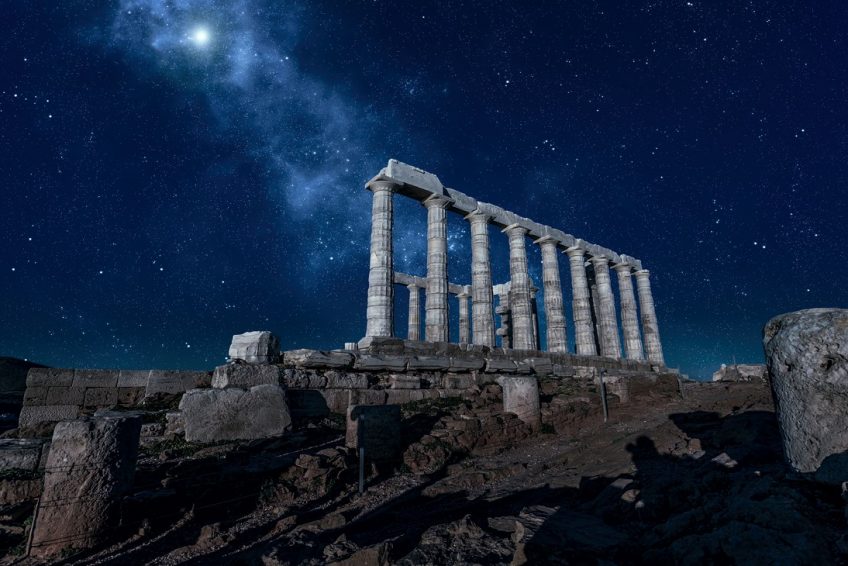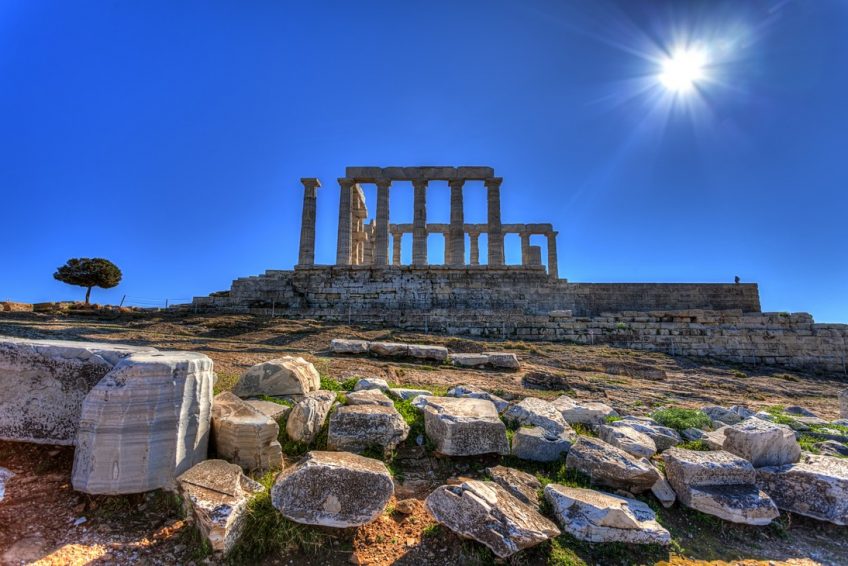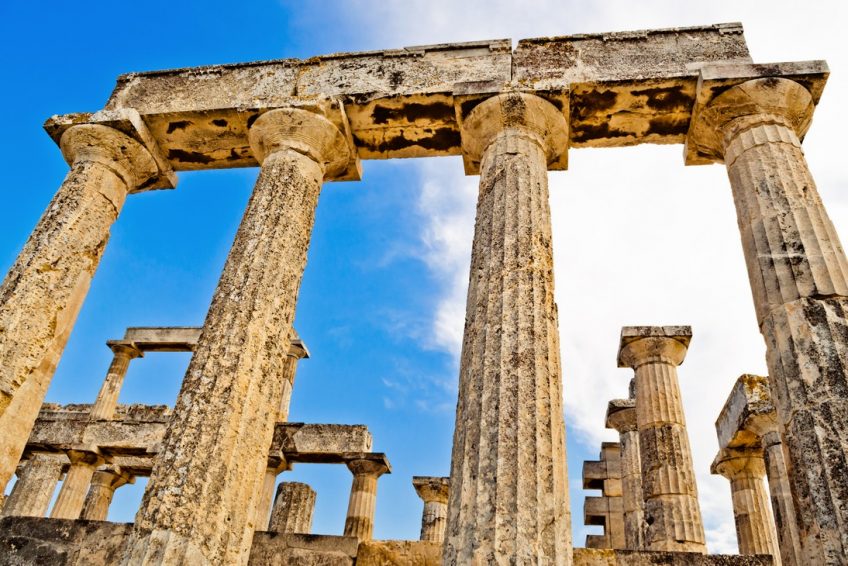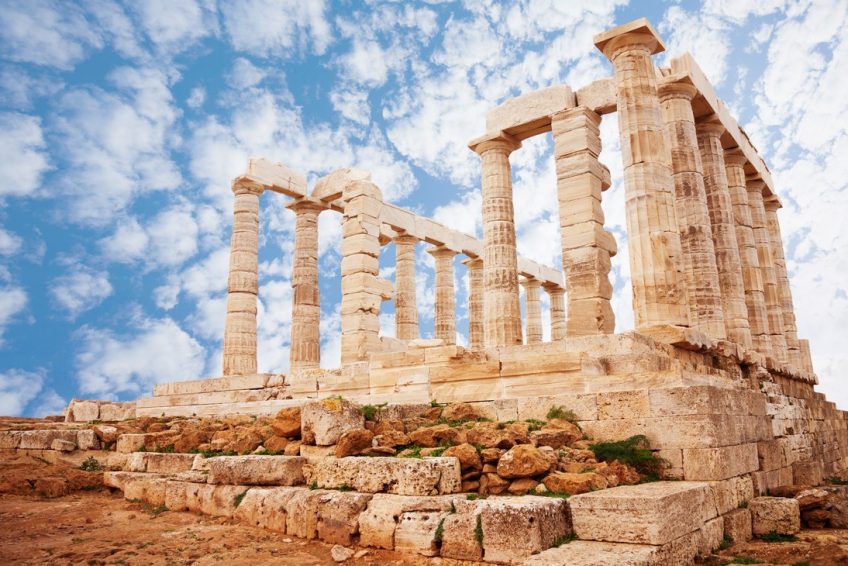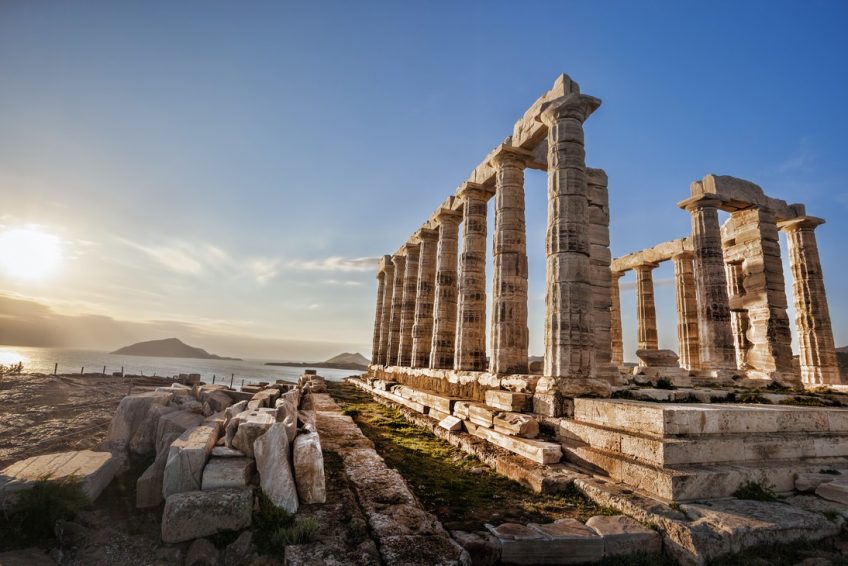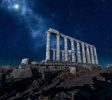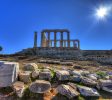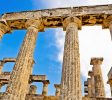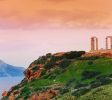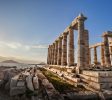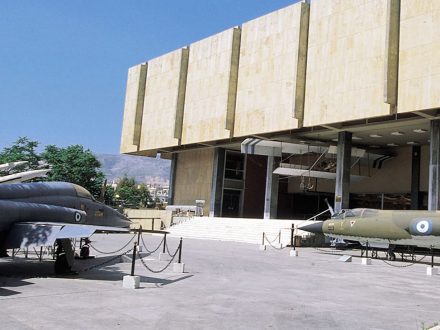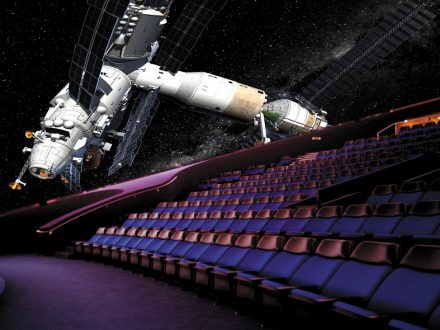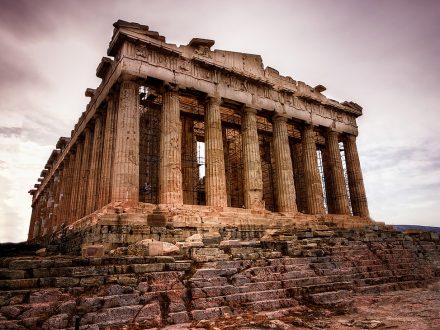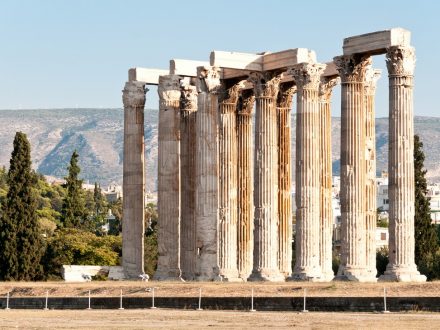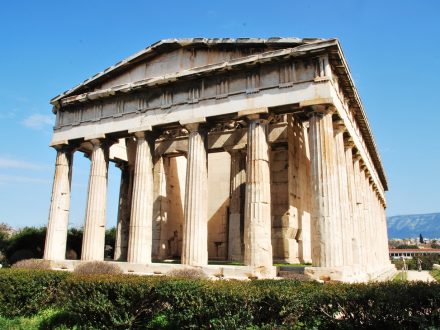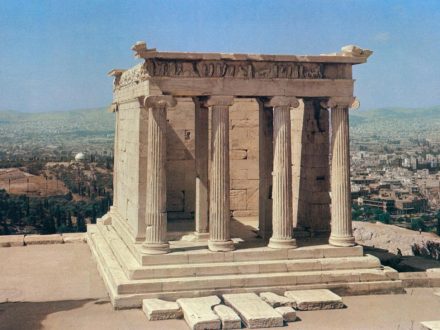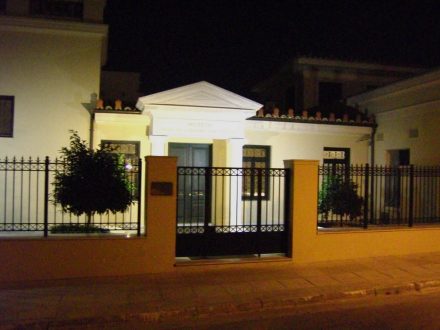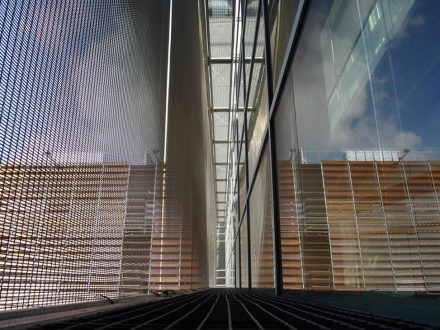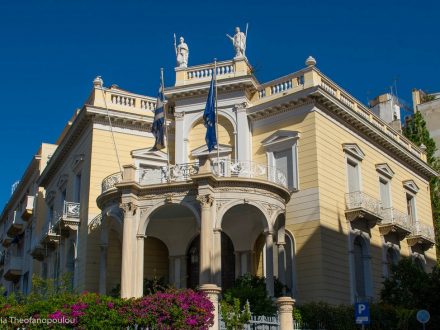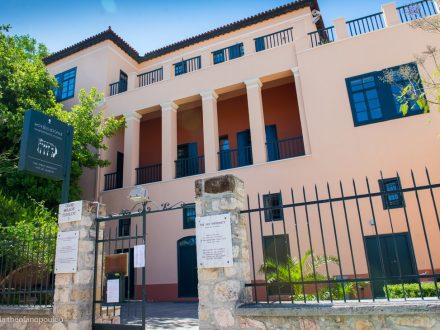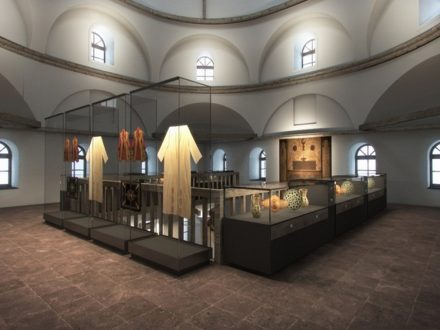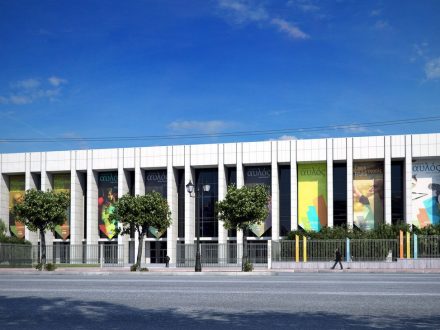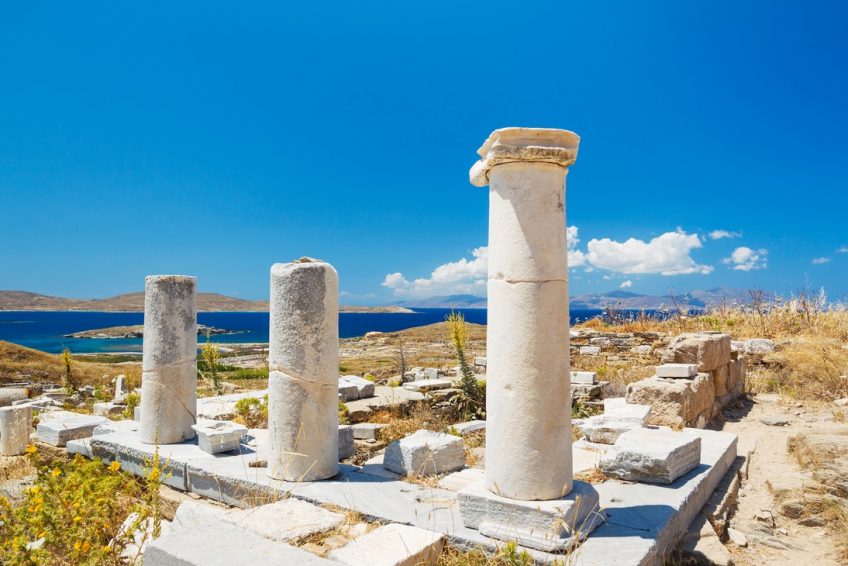
At Cape Sounion, the Athenians built a sanctuary surrounded by a wall. The sanctuary consisted of temples dedicated to the gods of the city. The principal temple was dedicated to Poseidon, the god of the sea. This is a Doric temple and is the only temple which has been preserved until today.
The Sanctuary at Sounion The Cape of Sounion was, in antiquity, the southern boundary of the territory of the city-state of Athens. At Cape Sounion, the Athenians built a sanctuary surrounded by a wall. The sanctuary consisted of temples dedicated to the gods of the city. The principal temple was dedicated to Poseidon, the god of the sea. This is a Doric temple and is the only temple which has been preserved until today. It is located at a height of 73 metres above the sea level. The second most important temple was dedicated to Goddess Athena, the goddess of wisdom and the goddess after whom the city took its name. In the outdoor space of the sanctuary, there were erected statues, votives dedicated to the gods, which were offered either by the city or by eminent city dwellers of Athens. One of them is known as the “Sounion Kouros” (Kouros= young man) and is exhibited in the National Archaeological Museum. In ancient times, the temples and statues were not all white; they were decorated in colour.
The Construction of the Temple of Poseidon at Sounion we see today – Historical background The Persian Wars stand out as an important milestone in the history of the Greeks. The Persians attempted two campaigns against the Greeks by gathering their army with fighters recruited from every corner of their empire: the one campaign was led in 490 BC and the other one ten years later, in 480 BC. The Greek state-formations, the city-states and kingdoms, allied with themselves in order to repulse the Persian invader. Both campaigns ended in Persian defeat, despite the overwhelming numerical superiority of the Persian army. The united Greeks emerged victorious because they fought for their freedom. Freedom is a concept fundamental to the ancient Greek civilization. The Persians and their enslaved peoples fought merely in fear of the Persian king and did not know what freedom meant. In the battles of the Persian wars, the Athenians and Spartans were the leading force. The Greek victories in the Persian wars stimulated the sense of national pride and self-confidence and boosted the Greek civilisation.
During the second Persian campaign, the military leadership of the city-state of Athens considered that the Athenians had to leave the city and organise their defence elsewhere. Thereby, the Persians invaded the deserted city and plundered it. They burned the sacred temples of the Acropolis and Sounion. The Athenians, from afar, could see the flames from the fire consuming their city rising up in the sky. However, they were not intimidated, because they knew that the actual power of their city was their naval supremacy and, above all, the soul of its people. After their victory, the Athenians returned to their city to realise the magnitude of the disaster.
It was then that Athens takes on the leading role among the Greeks. The protagonist in the political life of the city was first Kimon and then Pericles. It was Pericles who promoted democratic institutions. With his reforms, the citizens were increasingly involved in the administration of their city. The power of aristocracy was limited. The period during which Pericles ruled over the political life of Athens, namely from 461 up to 429 BC, is known as “the Golden Age of Pericles”. In Greek it is called “the Golden Century”, although it actually lasted for only thirty years. On Pericles’s initiative, the ruined temples of the Acropolis and, Sounion were reconstructed. The temples that we can see today on the Acropolis Hill as well as the temple of Poseidon at Sounion were erected in the context of the Pericles’s building programme. The Temple of Poseidon we see today was completed about forty years after the second Persian invasion, namely around 440 BC.
The myth of Theseus and the Minotaur The cape of Sounion is associated with the myth of Theseus and the Minotaur. This myth is dated back to a thousand years before the temple of Poseidon was built.
Circa 1450 BC, Athens was a kingdom, like all the other kingdoms at that time. On the hill of the Acropolis and in the place of Parthenon, there was a palace, where the king, Aegeas, lived with his family. At that time, Athens was forced to pay blood-tax to Crete, which ruled the seas. Every nine years, seven young men and seven young women were chosen by lot and sent to Crete to be given as food to the Minotaur, a horrible monster, having a bull’s head and a tail and a man’s body.Theseus, Aegeus’s son, offered to be included in the group of the young people who would go to Crete. He eventually managed to kill the Minotaur, relieving Athens from the toll. The Minotaur was confined in the Labyrinth, a mazelike network of passages. Theseus was able to spot the Minotaur and kill him. How did he manage, however, to find his way out of the Labyrinth? Ariadne, Minos’s daughter, who had fallen in love with Theseus, provided him with a skein of thread. She had advised him to fasten its one end to the entrance and unfold the thread as he went along the corridors of the Labyrinth. So, Theseus, following the course of the thread, was able to find the exit.
When he left the island to go back to Athens, he took Ariadne with him. They were two young people in love. Theseus, however, changed his mind and abandoned her on Naxos, an Aegean island. According to a version of the myth, he left Ariadne because he thought of another young girl in Athens. On Naxos, Dionysus, the God of wine and drama, encountered Ariadne, fell in love with her and married her.
The sails of the ship which carried the young people to Crete were black due to their tragic destination. King Aegeas had asked his son, Theseus, if he had managed to kill the Minotaur and return home, to change the black sails of the ship and put up white ones. After Theseus had killed the Minotaur and took his way back, he forgot to change the sails. His father, catching glimpse of the black sails, killed himself by falling into the deep sea from a cliff at Cape Sounion, where he used to sit all day long gazing at the horizon and hoping for his son to return alive. Ever since then, the sea in which he drowned is called the Aegean Sea.
In the precincts of the sanctuary of Sounion there were several statues. The statues were votive offerings of wealthy citizens of the city of Athens to the gods who were worshipped at Sounion, that is the god Poseidon and the goddess Athena. “Kouros” is a type of statue depicting a young man.
http://www.ancient-greek-history.com


